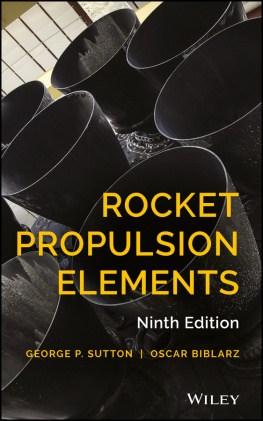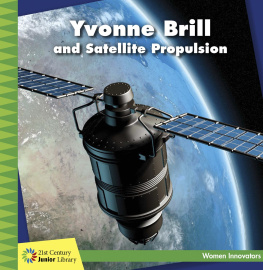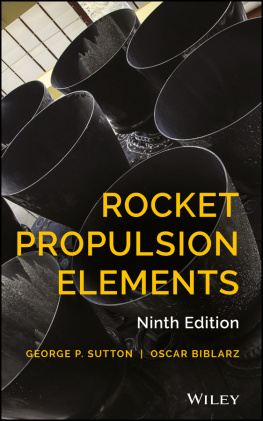George P. Sutton - Rocket Propulsion Elements
Here you can read online George P. Sutton - Rocket Propulsion Elements full text of the book (entire story) in english for free. Download pdf and epub, get meaning, cover and reviews about this ebook. year: 2016, publisher: Wiley, genre: Romance novel. Description of the work, (preface) as well as reviews are available. Best literature library LitArk.com created for fans of good reading and offers a wide selection of genres:
Romance novel
Science fiction
Adventure
Detective
Science
History
Home and family
Prose
Art
Politics
Computer
Non-fiction
Religion
Business
Children
Humor
Choose a favorite category and find really read worthwhile books. Enjoy immersion in the world of imagination, feel the emotions of the characters or learn something new for yourself, make an fascinating discovery.
- Book:Rocket Propulsion Elements
- Author:
- Publisher:Wiley
- Genre:
- Year:2016
- Rating:3 / 5
- Favourites:Add to favourites
- Your mark:
Rocket Propulsion Elements: summary, description and annotation
We offer to read an annotation, description, summary or preface (depends on what the author of the book "Rocket Propulsion Elements" wrote himself). If you haven't found the necessary information about the book — write in the comments, we will try to find it.
THE DEFINITIVE INTRODUCTION TO ROCKET PROPULSION THEORY AND APPLICATIONS
The recent upsurge in global government and private spending and in space flight events has resulted in many novel applications of rocket propulsion technology. Rocket Propulsion Elements remains the definitive guide to the field, providing a comprehensive introduction to essential concepts and applications. Led by industry veteran George P. Sutton and by Professor Oscar Biblarz, this book provides interdisciplinary coverage including thermodynamics, aerodynamics, flight performance, propellant chemistry and more.
This thoroughly revised ninth edition includes discussion and analysis of recent advances in the field, representing an authoritative reference for students and working engineers alike. In any engineering field, theory is only as useful as it is practical; this book emphasizes relevant real-world applications of fundamental concepts to link thinking and doing. This book will help readers:
- Understand the physics of flight and the chemistry of propulsion
- Analyze liquid, solid, gas, and hybrid propellants, and the engines they fuel
- Consider high-temperature combustion, stability, and the principles of electric and chemical propulsion
- Dissect the workings of systems in common use around the world today
- Delve into the latest advances in materials, systems, propellants, and more
Broad in scope, rich in detail, and clear in explanation, this seminal work provides an unparalleled foundation in aerospace engineering topics. Learning through the lens of modern applications untangles complex topics and helps students fully grasp the intricacies on a more intuitive level. Rocket Propulsion Elements, Ninth Edition merges information and utility building a solid foundation for innovation.
George P. Sutton: author's other books
Who wrote Rocket Propulsion Elements? Find out the surname, the name of the author of the book and a list of all author's works by series.










 = 9.80665m/sec2 = 32.174ft/sec2 (standard gravity constant at Earth's surface)
= 9.80665m/sec2 = 32.174ft/sec2 (standard gravity constant at Earth's surface) applies at the Earth's surface)
applies at the Earth's surface)




 (m/sec or ft/sec) (assume that
(m/sec or ft/sec) (assume that  )
)
 ,
, 
